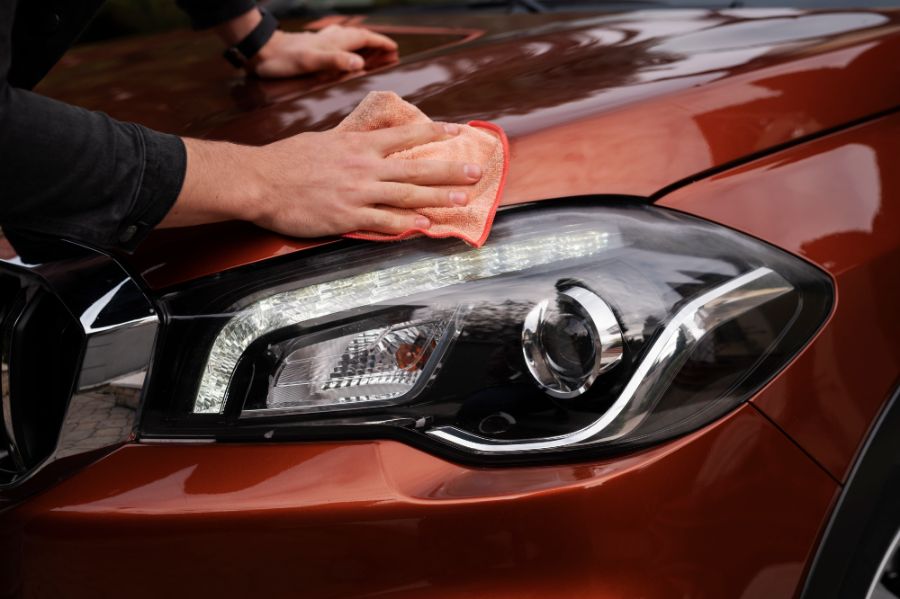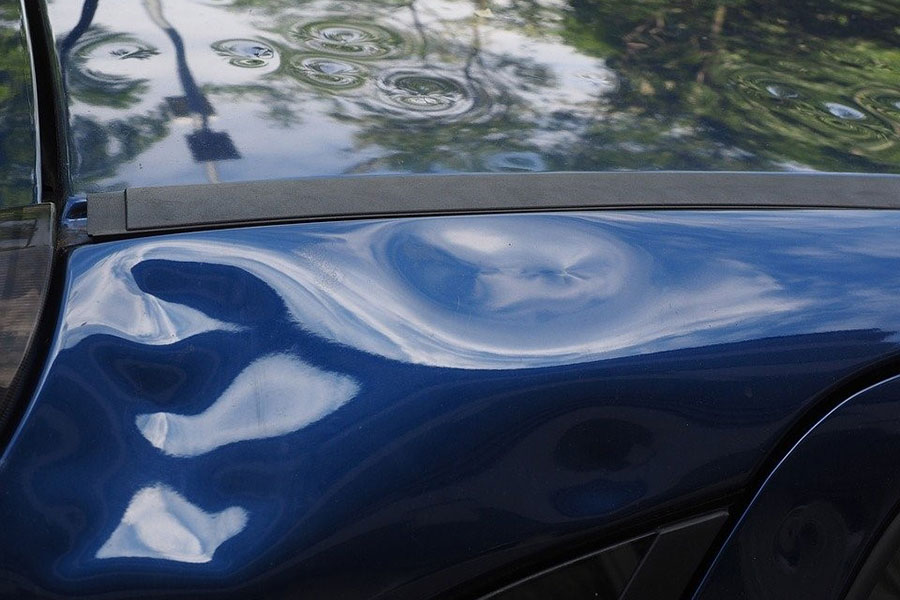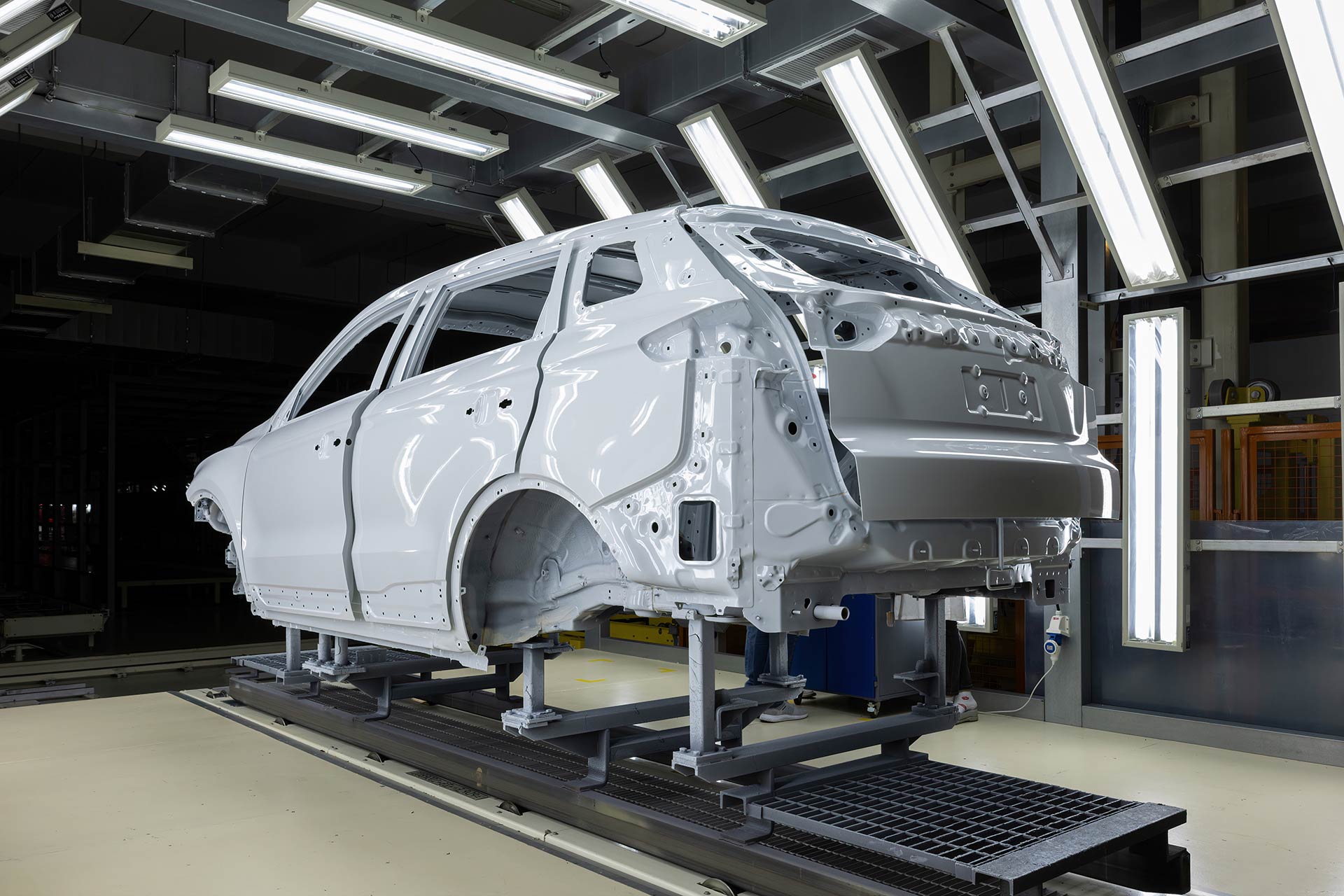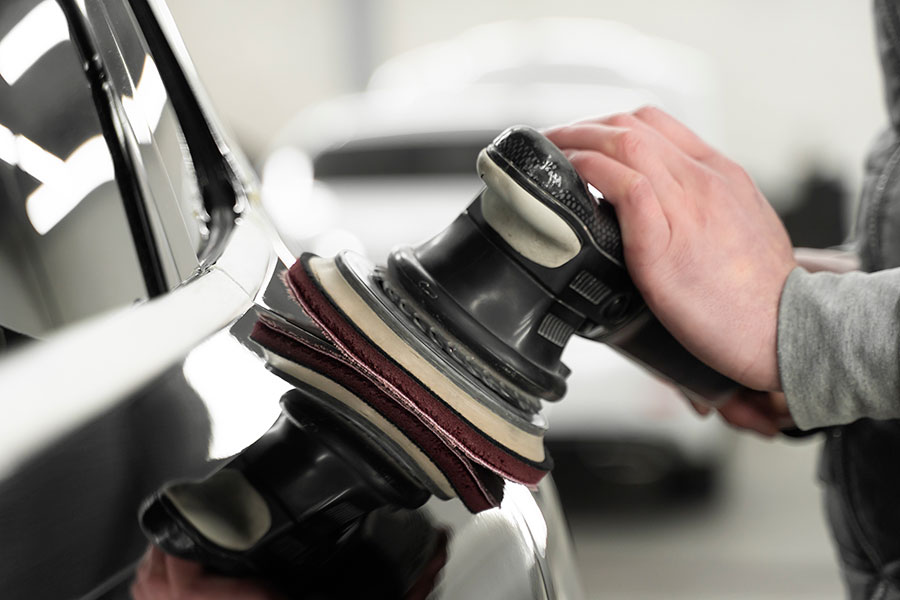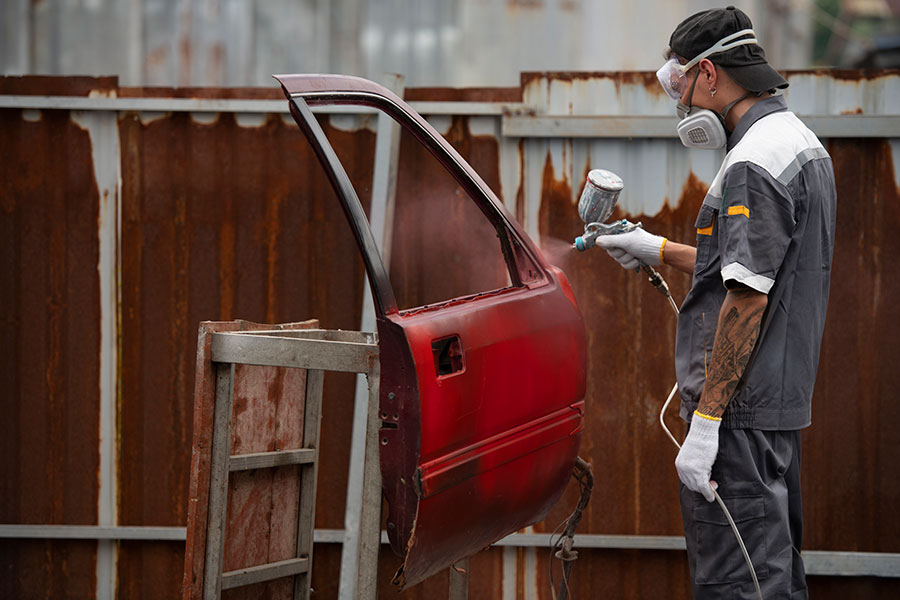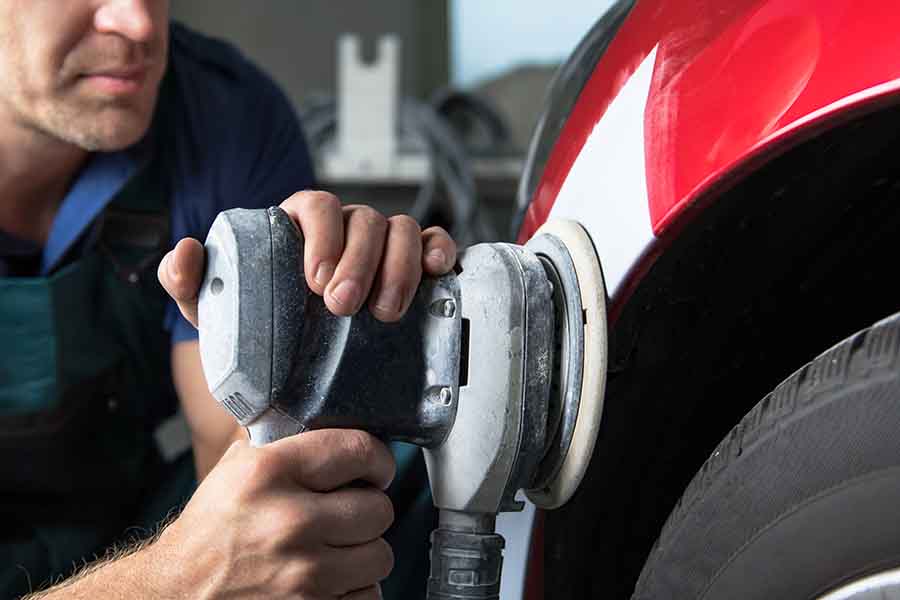The Paintless Dent Repair (PDR) process has revolutionized how we fix minor dents and dings on our vehicles, offering a quicker, more cost-effective alternative to traditional bodywork. Originating in the manufacturing lines of Europe in the 1940s, this technique has evolved into an art form that restores a car’s surface to its original state without compromising the factory paint job. Today, it's not just about fixing a dent; it's about preserving your vehicle's value and aesthetics without the hassle of lengthy repairs or repainting. Dive into the world of PDR with us, where we'll break down how this innovative process can save you time and money while keeping your ride looking its best.
Exploring Paintless Dent Repair
PDR Basics
Paintless Dent Repair (PDR) is a modern method to fix minor dents and dings without needing to repaint the car. This technique allows technicians to restore the vehicle's surface while preserving the original paint. Unlike traditional methods, PDR does not require fillers or sanding.
PDR stands out because it's less invasive and more cost-effective. It saves time and maintains the car's value since the original paint remains untouched.
Suitable Dents
PDR works best on small to medium-sized dents where the paint has not been broken. It's ideal for damage caused by hail, door dings, and minor body creases. However, sharp dents or areas with damaged paint may not qualify for PDR.
This method shines in fixing dents that are accessible from the backside of the panel. It's less effective on dents close to the edge of panels or on double metal layers.
Tools and Techniques
Technicians use a variety of specialized tools in PDR. These include metal rods and body picks to push out dents from behind the panel. They also use glue pullers that can pull dents from the outside without needing access to the back of the panel.
A key technique in PDR is "tapping," which involves carefully tapping down the repair area to remove small high spots, making the surface smooth again. Lighting or reflection boards are used to see the dent clearly during repairs.
The skill of the technician plays a significant role in successful PDR. It requires a detailed understanding of car panels and patience to massage the metal back into place without causing harm to the paintwork.
Advantages of PDR
Cost Savings
Paintless Dent Repair (PDR) stands out for its cost-effectiveness. Unlike traditional methods, PDR does not require fillers, paint, or other materials. This significantly reduces the overall expenses.
By avoiding these materials, labor costs also drop. Technicians can complete the job in less time, passing the savings onto vehicle owners. It's a win-win situation.
Time Efficiency
One of the most appealing benefits of PDR is its time-saving nature. Traditional dent repair can take days or even weeks. In contrast, PDR typically requires only a few hours.
This quick turnaround means less downtime for your vehicle. You get back on the road faster without sacrificing quality.
Original Paint Preservation
Preserving the vehicle's original paint is another key advantage of PDR. This technique manipulates the metal back into place without disturbing the paint finish.
Keeping the original paint intact maintains the car's aesthetic appeal and resale value. It's like the dent never happened.
Enhanced Resale Value
The impact of PDR on a vehicle's resale value cannot be overstated. Since the original paint remains untouched, it helps maintain the car's value over time.
Potential buyers often view preserved original paint as a sign of well-maintained vehicles. This perception can significantly boost your car's marketability.
Environmental Impact
PDR is also environmentally friendly. By eliminating the need for paints and fillers, it reduces harmful emissions released into the atmosphere.
This method contributes to sustainability efforts by minimizing waste and chemical use. It's an eco-conscious choice for savvy car owners.
Preserving Car Finish
Original Paintwork
Maintaining the original paintwork is crucial in preserving a car's value. PDR plays a significant role here. It fixes dents without harming the car's paint. This method avoids the need for fillers, sanding, and repainting.
PDR technicians carefully manipulate the metal back into place from behind the panel. They use special tools and techniques. This process ensures the paint remains untouched. Keeping the original paint helps maintain the car's resale value. It also keeps it looking new for longer.
Color Matching
Avoiding color mismatches is another benefit of PDR. When cars are repainted, matching the original color can be challenging. Even a slight difference in shade is noticeable.
Repainting involves blending new paint with the old to ensure uniformity. This process is not only time-consuming but also costly. With PDR, this issue is nonexistent. The technique preserves the original paint, eliminating any risk of mismatch.
Factory Finish
Preserving the factory finish offers long-term benefits for car owners. The factory-applied coat is designed to last many years. It provides protection against rust and environmental damage.
Choosing Expert Technicians
Specialized Training
Finding a technician with specialized training in Paintless Dent Repair (PDR) is crucial. This skill requires not only knowledge but also precision and experience. Technicians trained specifically in PDR techniques can ensure that your car's finish remains intact, echoing the importance of preserving your vehicle's appearance as mentioned earlier.
Technicians undergo rigorous training to master the art of manipulating metal back into its original form without harming the paint. This process demands a deep understanding of car models and their metalwork. Hence, selecting a technician with specialized training guarantees that your car is in capable hands.
Certifications
It's advisable to look for technicians who hold certifications or are affiliated with professional PDR organizations. These credentials serve as proof of their expertise and commitment to high standards in the field of dent repair.
Certifications from reputable organizations mean that the technician has passed assessments demonstrating their proficiency in PDR techniques. Affiliations, on the other hand, indicate that they are keeping up with the latest advancements and best practices in the industry. When choosing a technician, asking about their certifications or affiliations can guide you to professionals who are recognized for their skills and ethical practices.
Proof of Quality
Asking for before-and-after photos of previous repairs is an excellent way to assess a technician’s quality of work. These images provide tangible evidence of their ability to seamlessly restore cars to their pre-damaged condition.
Before-and-after photos showcase the technician's skill in making dents disappear without leaving any trace. They allow you to visually verify the effectiveness of PDR and set realistic expectations for your own vehicle's repair process. By examining these photos, you can make an informed decision based on the quality of outcomes the technician has achieved in the past.
Process Behind PDR
Damage Assessment
The first step in the paintless dent repair (PDR) process is a thorough damage assessment. Technicians examine the dent's size, location, and depth. They need to ensure the area around the dent is accessible for the PDR tools. This step determines if PDR is the best method for repair.
Experts use special lights or reflector boards to see the dent's details clearly. They may also clean the damaged area to get a better view. This careful evaluation sets the stage for a successful repair.
Preparing the Vehicle
Once the damage is assessed, preparing the vehicle is next. Technicians might need to remove interior panels or body parts. This ensures they can reach the backside of the dent.
Preparation is key to accessing and fixing the dent without causing more damage. It's why choosing expert technicians, as discussed earlier, is crucial. They know exactly how to prepare your car for PDR.
Dent Repair
The core of PDR involves gently massaging the dents from beneath. Technicians use specialized tools to push and massage the dented metal back into its original shape.
This technique requires skill and patience. The goal is to restore the panel without affecting the paint job. It's a delicate balance that expert technicians have mastered over time.
Quality Checks
After repairing the dents, quality checks are essential. Technicians inspect their work to ensure there are no remaining signs of damage. They may use lights or reflector boards again to view the repaired area from different angles.
These final checks guarantee that the vehicle looks as good as new. Customer satisfaction hinges on these meticulous inspections.
Customer Satisfaction
Ensuring customer satisfaction closes out the PDR process. Technicians review their work with the vehicle owner, highlighting the repaired areas.
Feedback is encouraged, and any concerns are addressed promptly. The aim is for customers to leave feeling confident about their vehicle’s appearance and safety.
Specialty Services for Vehicles
Additional Services
Beyond the core process of PDR, specialists often extend their expertise to other areas of vehicle care. Headlight restoration is one such service that complements PDR, targeting the clarity and functionality of a car's headlights. Over time, exposure to sunlight and road chemicals can dull and yellow headlight lenses, reducing visibility.
Paint touch-ups represent another critical service. They address minor scratches and chips that PDR cannot fix, ensuring the vehicle's exterior remains pristine. These additional services not only enhance the vehicle's appearance but also maintain its value over time.
Customization Options
Vehicle owners looking to customize their cars find PDR specialists offer more than just dent removal. Custom paint jobs allow for personal expression on the road, transforming a standard vehicle into a unique statement.
Window tinting is another popular choice among clients seeking both style and function. It not only adds an aesthetic edge but also protects against UV rays and increases privacy. These customization options enable owners to tailor their vehicles to their specific tastes and needs, making PDR shops a one-stop solution for both repairs and enhancements.
Mobile Services
The convenience of mobile PDR services cannot be overstated. Specialists equipped with the necessary tools can visit your home or office, repairing minor dents and dings without requiring you to leave your premises. This service is ideal for busy individuals who cannot afford to lose time at a repair shop.
Flexibility in scheduling and the ability to address issues promptly make mobile PDR a preferred choice for many. It ensures that even with a tight schedule, your vehicle can maintain its aesthetic appeal and integrity.
Refresh Your Vehicle
PDR Benefits
PDR, or paintless dent repair, is a game-changer for vehicle maintenance. It's a process that removes dents and dings without needing to repaint your car. This means keeping your original paint job intact and saving money.
By choosing PDR, you're opting for a quick and cost-effective way to improve your vehicle's appearance. It's less invasive than traditional body work, so your car stays factory-fresh longer. Plus, it can significantly increase your vehicle's resale value.
Appearance Rejuvenation
Removing dents and dings from your vehicle does more than just improve its looks; it breathes new life into your car. Each dent removed makes your vehicle look newer and more cared for.
Imagine your car free of imperfections, looking as good as the day you bought it. That's what PDR offers. It's not just about fixing damage; it’s about restoring pride in your ride. This small change can make a big difference in how you feel about your car.
Combined Services
For those seeking the ultimate vehicle refresh, combining PDS with other detailing services is the way to go. Think of PDR as the first step in a full car makeover. After removing dents, consider getting a professional polish or interior detail.
Adding window tinting or protective coatings can also protect your car from future damage. By bundling these services, you create a comprehensive care plan that keeps your car looking its best for years to come.
Debunking PDR Myths
Size Matters
Many believe paintless dent repair (PDR) only fixes small or minor dents. This isn't true. PDR can also mend larger damages effectively. The technique's success depends on the dent's location and how it affects the metal or paintwork. Technicians use specialized tools to gently massage the area back into shape. They do this from behind the panel, preserving your car's original finish.
Larger dents require more skill but are not beyond PDR’s capability. The key is how the metal stretched and whether the paint remained intact. If these conditions are met, even sizable dents can disappear without a trace.
Structural Integrity
Another misconception is that PDR weakens a vehicle's structural integrity. This couldn't be further from the truth. PDR is a non-invasive method. It does not involve sanding, body fillers, or painting. Because of this, the original factory sealant remains untouched, keeping your car as strong as the day it left the showroom.
The process is careful and precise, ensuring no harm comes to your vehicle’s structure. In fact, maintaining the original paintwork helps preserve both the car’s integrity and value.
Weather Woes
Some say PDR isn’t effective in certain weather conditions. They think cold or hot climates make PDR less successful. However, experienced technicians can adapt to most weather scenarios. Proper technique and understanding of metal properties allow PDR to work in various conditions.
In extreme cold, metal contracts. Technicians may use heat to expand the metal before manipulating it back into place. In hot climates, they might cool the area first. These adjustments ensure PDR remains a viable option year-round.
Eco-Friendly Solutions in PDR
Reduced Waste
PDR techniques stand out for minimizing waste. Unlike traditional repair methods, PDR avoids the use of body fillers and reduces the need for new paint. This results in significantly less material waste ending up in landfills.
Traditional dent repair often involves sanding, filler application, and repainting. Each step generates waste, from sandpaper and masking tape to excess paint and solvent. PDR, by contrast, works the existing metal back into shape. It's a process that respects the vehicle's original materials without adding unnecessary waste.
Lower Emissions
The PDR process contributes to lower chemical emissions. By avoiding paint and filler use, PDR eliminates the release of volatile organic compounds (VOCs) into the atmosphere. VOCs are harmful pollutants that contribute to air quality degradation and pose health risks to humans.
In traditional repairs, painting a car involves solvents and chemicals that evaporate into the air, releasing VOCs. These emissions are not just harmful to the environment but also to the technicians who apply them and the communities surrounding auto shops. PDR sidesteps this issue entirely, offering a cleaner alternative.
Sustainable Practices
PDR promotes sustainable practices within the auto repair industry. It encourages the preservation of original parts and materials, extending their lifespan and reducing the demand for new resources.
Summary
Paintless Dent Repair (PDR) stands out as your go-to method for fixing those annoying dents without messing up your car’s finish. You've seen the perks, from preserving your vehicle's original paint to choosing eco-friendly options that won't harm the planet. It's clear that PDR is not just about fixing dents—it's about keeping your car looking its best while being kind to the environment. By debunking myths and understanding the process, you're now equipped to make informed decisions about maintaining your vehicle's appearance.
Don’t let dents dampen your drive. Seek out expert technicians who specialize in PDR to refresh your ride and keep it looking sharp. Remember, a well-maintained car reflects well on you. So, why wait? Give your car the care it deserves and boost its value today. Your vehicle is more than just a mode of transport—it's a statement. Make yours count.
Frequently Asked Questions
What is Paintless Dent Repair (PDR)?
Paintless Dent Repair (PDR) is a process that removes dents from vehicles without affecting the original paintwork, using specialized tools to push or pull the dents out from the inside.
How does PDR preserve my car's finish?
PDR maintains your car's original finish by avoiding repainting and filler use, ensuring the factory paint remains intact and untouched.
Why should I choose expert technicians for PDR?
Expert technicians possess the necessary skills, experience, and tools to ensure high-quality, efficient repairs that maintain your vehicle's value and appearance.
Can you explain the process behind PDR?
The PDR process involves accessing the backside of the dent and using special tools to gently massage the metal back to its original shape without damaging the paint.
What are some specialty services in PDR?
Specialty services include removing dents from difficult-to-access areas, repairing hail damage, and fixing creases without compromising the vehicle’s factory paint job.
How can PDR refresh my vehicle?
PDR restores your vehicle’s appearance by removing unsightly dents and dings, making it look as good as new without the need for costly bodywork.
Is PDR an eco-friendly solution?
Yes, PDR is eco-friendly as it doesn't require fillers, paints, or other materials that can harm the environment, making it a sustainable choice for vehicle repair.
